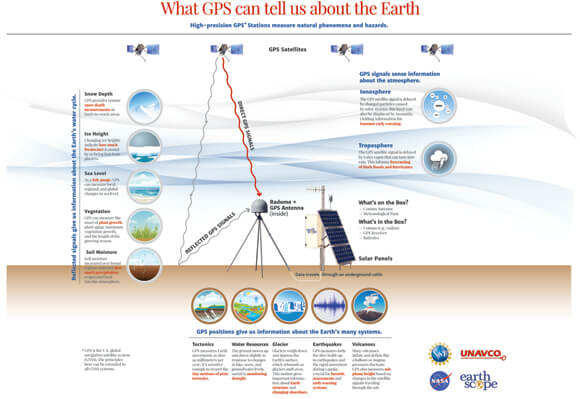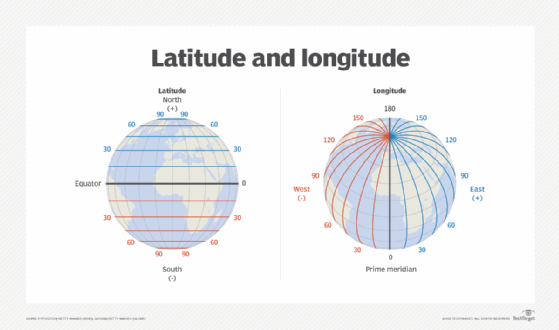
Have you ever wondered how a GPS chipset determines your location with such accuracy? Well, wonder no more! In this article, we’re going to dive into the fascinating world of GPS technology and uncover the secrets behind how a GPS chipset pinpoints your exact location.
So, how does a GPS chipset do it? Let’s break it down. Inside your GPS-enabled device, there’s a tiny chip that acts as the brain behind the magic. This chip receives signals from multiple satellites orbiting the Earth and uses a process called trilateration to calculate your precise coordinates.
Trilateration? Sounds complicated, right? Don’t worry, it’s simpler than you might think. Using the signals from at least four satellites, the GPS chipset measures the time it takes for each signal to reach your device. By comparing these time differences, the chipset can determine your distance from each satellite and, ultimately, your accurate location on Earth. Amazing, isn’t it? So, let’s delve deeper into the inner workings of GPS chipsets and unveil the technological wizardry behind them.

How Does a GPS Chipset Determine Accurate Location?
In today’s technologically advanced world, GPS (Global Positioning System) has become an essential tool for navigation and location-based services. From smartphone apps to vehicle tracking systems, GPS provides accurate positioning information. But have you ever wondered how a GPS chipset determines accurate location? In this article, we will explore the fascinating process behind GPS technology and the key factors that contribute to its accuracy.
1. Understanding GPS Chipsets
A GPS chipset is the core component responsible for receiving and processing signals from satellites to determine accurate positioning information. It typically consists of a receiver, an antenna, and a processing unit. The receiver captures signals transmitted by multiple GPS satellites, while the antenna helps in obtaining a clear line of sight to receive these signals. The processing unit then analyzes and calculates the data received to determine accurate location coordinates.
The primary function of a GPS chipset is to perform a process called trilateration. Trilateration involves measuring the time it takes for signals to travel from satellites to the receiver. By knowing the speed of signal propagation, the chipset can calculate the distance between the receiver and each satellite. With this information, it forms a sphere around each satellite, and the intersection of these spheres represents the accurate location.
Furthermore, GPS chipsets also incorporate algorithms to account for factors like signal delays caused by the Earth’s atmosphere, satellite clock errors, and the position of additional satellites in orbit. These algorithms play a crucial role in enhancing the accuracy of GPS positioning.
2. The Role of Satellite Constellations
GPS relies on a network of satellites known as a satellite constellation to provide accurate positioning information. At any given time, there are multiple satellites in orbit transmitting signals to GPS chipsets on Earth. The accuracy of GPS positioning depends on the number and positioning of these satellites.
A minimum of four satellites is required for accurate positioning. However, the more satellites in view, the better the accuracy. GPS chipsets continuously track available satellites and choose the best ones to calculate accurate location coordinates. They take into account factors such as the signal strengths, the geometric dilution of precision (GDOP), and the overall satellite configuration to ensure the highest possible accuracy.
The United States’ GPS system is comprised of 24 satellites. Additionally, there are other global navigation satellite systems like Galileo (European Union), GLONASS (Russia), and BeiDou (China), each with their own satellite constellations. By using signals from multiple satellite systems, GPS chipsets can further improve accuracy and provide reliable positioning information, regardless of the geographical location.
3. Factors Affecting GPS Accuracy
While GPS chipsets are designed to provide accurate positioning information, certain factors can affect their accuracy. Here are some key factors to consider:
- Satellite Geometry: The arrangement of satellites in the sky affects the accuracy of GPS positioning. When the satellites are in close proximity or grouped together, it can result in poor accuracy due to potential errors in calculating distances.
- Signal Obstruction: Buildings, trees, and other obstacles can obstruct the GPS signals, leading to reduced accuracy or loss of signal altogether. It is crucial to have a clear line of sight to multiple satellites for accurate positioning.
- Atmospheric Conditions: The Earth’s atmosphere can delay the GPS signals, causing errors in distance calculations. Atmospheric conditions like ionospheric disturbances and weather conditions can impact GPS accuracy.
- Receiver Quality: The quality and sensitivity of the GPS receiver in a chipset also play a role in determining accuracy. Higher-quality receivers with better signal processing capabilities can provide more accurate positions.
Key Takeaways: How Does A GPS Chipset Determine Accurate Location?
- A GPS chipset calculates accurate location by receiving signals from multiple satellites.
- It measures the time it takes for signals to travel from satellites to the chipset.
- By comparing signal timings, the chipset can determine the distance from each satellite.
- Using trilateration, the chipset calculates the exact position based on satellite distances.
- Factors like atmospheric conditions or obstructions may affect GPS accuracy.
Frequently Asked Questions
When it comes to accurately determining location, GPS chipset technology plays a vital role. Below are some common questions and detailed answers about how GPS chipsets determine accurate locations:
How does a GPS chipset work?
A GPS chipset is a combination of hardware and software that receives signals from multiple satellites to calculate your exact location. Firstly, the GPS antenna in the chipset catches signals from at least four satellites in the GPS network. The chipset then analyzes the time it takes for the signals to reach the antenna, which helps it determine the distance between the satellites and the antenna.
By comparing the signals and distances from multiple satellites, the GPS chipset can accurately calculate your position on the Earth’s surface, using a process called trilateration. It then translates the information into latitude and longitude coordinates, providing you with an accurate location.
Why is it essential for a GPS chipset to have multiple satellites?
Having multiple satellites is crucial for accurate GPS positioning because each satellite only provides a signal that can give you an approximate location. By receiving signals from at least four satellites, the GPS chipset can use the Time of Arrival (TOA) method to calculate the distance between each satellite and the antenna. With this information, it can then perform the mathematical trilateration calculation to pinpoint your exact location on the Earth’s surface.
The more satellites the chipset can receive signals from, the more accurate the location determination becomes. By using signals from multiple satellites, the GPS chipset can compensate for any errors or interference, such as atmospheric conditions, buildings, or trees that may obstruct the direct line of sight between the antenna and the satellites.
What factors can affect the accuracy of a GPS chipset?
While GPS chipsets are designed to provide accurate location information, certain factors can impact their accuracy. One factor is the quality and strength of the GPS signals received from the satellites. If the signals are weak or disrupted by physical obstacles, such as tall buildings or dense forests, the accuracy of the GPS chipset’s calculations may be affected.
Another factor is the presence of ionospheric and atmospheric conditions, which can cause signal delays or distortion. These conditions can introduce errors into the calculations performed by the GPS chipset, resulting in less accurate location information. Additionally, errors can also arise from inaccuracies in the GPS chipset’s internal clock or errors in the satellite’s orbital data.
How does a GPS chipset handle signal interference?
GPS chipsets are designed to handle signal interference by using various techniques. One common technique is called signal filtering, where the chipset filters out unwanted or weak signals that may interfere with the accuracy of the location calculation. It focuses on signals from multiple satellites that are stronger and more reliable.
Another technique is called signal attenuation, which reduces the impact of signal interference on the calculations. The chipset analyzes the signal strength and quality from each satellite, and if it detects interference or weak signals, it adjusts the weight given to that specific satellite’s information in the location calculation. By prioritizing stronger signals, the chipset can improve the accuracy of the calculated location.
Can a GPS chipset determine location accurately in all conditions?
A GPS chipset’s ability to determine location accurately can vary depending on the conditions. In ideal conditions, with a clear view of the sky and strong GPS signals, a GPS chipset can provide highly accurate location information. However, certain conditions can impact its accuracy.
In environments with significant signal obstructions, like dense urban areas or dense forests, the accuracy may be reduced due to the weakened or blocked signals. Additionally, during adverse weather conditions or in areas with tall structures, the GPS chipset’s calculations may be impacted by signal delays or interference. Overall, while a GPS chipset strives to provide accurate locations, it’s important to be aware of potential limitations in certain conditions.
Summary
GPS chipsets help us find our location accurately by using satellites and measuring signals. They work by calculating the distance between us and multiple satellites to pinpoint our position. The chipset receives signals from the satellites and uses them to calculate latitude, longitude, and altitude. By comparing signals from different satellites, it can determine how far we are from each one, enabling an accurate location fix. The accuracy can be affected by factors like obstacles, satellite availability, and signal interference.
GPS chipsets also use algorithms and data from the satellites to improve accuracy. They account for errors caused by factors like the Earth’s atmosphere, satellite clock inaccuracies, and signal delays. These corrections help make the location readings more precise. Overall, GPS chipsets play a crucial role in navigation, tracking, and various other applications that require accurate positioning information.






